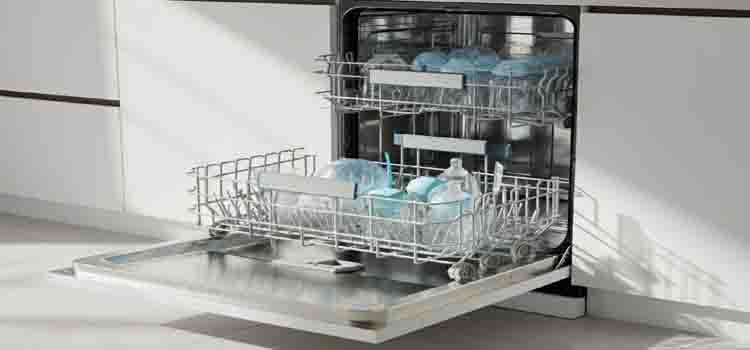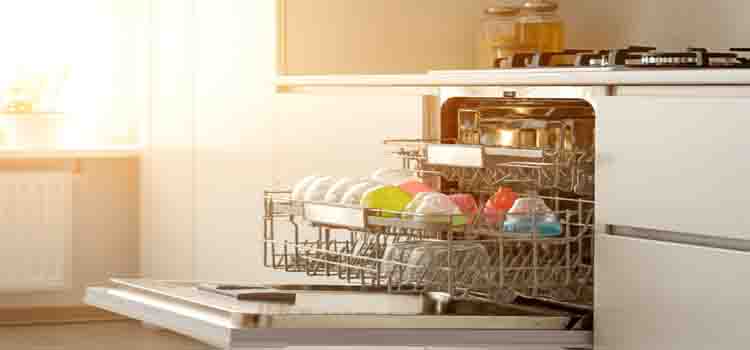As an Amazon Associate I earn from qualifying purchases.
Cleaning baby bottles is a daily task for many parents. A common question is, “Can baby bottles go in the dishwasher?” The answer is generally yes, but it’s important to follow specific guidelines. Dishwashers save time and properly sanitize bottles.
However, not all manufacturers create bottles equally. Some materials or designs may require special care. Knowing which bottles are dishwasher-safe can make your life easier. In this guide, we will discuss the dos and don’ts of cleaning baby bottles in the dishwasher.

Can Baby Bottles Go in the Dishwasher?
Are Baby Bottles Dishwasher Safe?
Most baby bottles are dishwasher safe, but it’s important to check each bottle’s specific instructions. Bottles made of certain materials, such as plastic or glass, are typically dishwasher-friendly. Not all manufacturers create bottles equally. Some manufacturers may recommend hand washing or specific cleaning methods to maintain the integrity of the bottle.
When in doubt, check the bottle for a dishwasher-safe symbol or read the manufacturer’s guidelines. According to the CDC, as long as the bottle is labeled dishwasher safe, it’s generally okay to wash it in the machine.
Identifying Dishwasher-Safe Bottles
Here’s how to identify if your baby bottles are safe for the dishwasher:
Look for Labels: The easiest way to determine if your bottle is dishwasher safe is to check for a dishwasher-safe symbol or instructions directly on the packaging or the bottle itself.
Material Considerations:
- Plastic Bottles: These are the most common baby bottles, and most are safe for the dishwasher. However, always check the label. It’s best to place plastic bottles on the top rack to avoid exposure to high heat.
- Glass Bottles: Glass bottles are durable and often dishwasher-safe, but they can break more easily under the extreme heat of the dishwasher. Handle them with care and place them securely.
- Silicone Bottles: Silicone bottles should be checked for manufacturer guidelines, as some may be safe for the dishwasher while others may not be.
Popular Brands: Brands like Philips Avent, Dr. Brown’s, and Evenflo often include dishwasher-safe labels, but always double-check.
Preparing Bottles for the Dishwasher
Before loading your bottles into the dishwasher, it’s important to prepare them properly. Here’s what you need to do:
Disassemble Parts: Always separate the bottle’s nipple, ring, cap, and other parts. This ensures that the small parts are cleaned thoroughly and that they don’t get damaged or clogged during washing.
Rinse Thoroughly: After every feed, rinse your bottles to remove milk residue. Leftover milk can lead to bacteria growth and a lingering smell if not cleaned properly.
Use a Dishwasher Basket: A dishwasher basket is a great tool for keeping small parts like nipples and rings secure. It prevents these parts from falling into the bottom of the dishwasher, where they might get damaged or stuck in the filter.
Loading the Dishwasher
When it comes to loading your dishwasher, there are a few tips to ensure your bottles get cleaned effectively without any damage:
Top Rack Only: Always place your baby bottles on the top rack of the dishwasher. The bottom rack’s higher temperatures and more intense water pressure can cause damage, especially to plastic bottles.
Upside Down Position: Place bottles upside down to avoid water pooling inside them. This ensures that the bottles dry faster and completely.
Avoid Overcrowding: Don’t overload the dishwasher. This can prevent proper cleaning and might cause bottles to shift around during the wash cycle.
Selecting the Right Dishwasher Cycle
Choosing the correct cycle is crucial to make sure your baby bottles are cleaned properly and safely:
Hot Water Setting: Choose a hot water cycle to ensure that any bacteria or germs are killed. Most dishwashers reach temperatures that are high enough to sanitize items, but you should check the manufacturer’s recommendations for your dishwasher and bottles.
Heated Dry Option: Using the heated dry option helps dry the bottles quickly and thoroughly. It also aids in sanitizing, as the high heat can kill remaining germs.
Avoid Eco Mode: While eco-friendly modes save energy, they might not use enough heat to kill germs and sanitize bottles effectively. Stick to standard or sanitizing cycles for the best results.
Common Mistakes to Avoid
To get the best results when washing your baby bottles, avoid these common mistakes:
Using Regular Detergent: Always use a detergent that is baby-safe or specifically designed for washing baby items. Regular dish soap or detergent can leave residue behind that could irritate your baby’s skin or cause allergic reactions.
Mixing with Adult Dishes: It’s important not to wash baby bottles alongside adult dishes. There’s a risk of contamination, and it can be hard to ensure that bottles are properly sanitized if they are mixed with other items.
Skipping Rinsing: Failing to rinse bottles thoroughly before placing them in the dishwasher can lead to bacteria buildup. Always rinse bottles after use to prevent milk residue from turning into a breeding ground for germs.
Post-Wash Care
Once the dishwasher has finished, it’s important to properly care for your bottles:
Inspect Bottles: Check for any damage, wear, or cracks. Even small cracks can trap bacteria, so if you notice any damage, it’s best to discard the bottle.
Air Dry Completely: Allow the bottles to air dry completely before storing them. Any leftover moisture can lead to mold or mildew growth.
Regular Sterilization: While washing your bottles in the dishwasher is effective for everyday cleaning, periodic sterilization is recommended, especially for newborns. Sterilizing bottles can provide an extra level of cleanliness and kill any remaining germs.
Alternatives to Dishwasher Cleaning
If you’re not comfortable using the dishwasher or need a more thorough cleaning, here are some alternatives:
Hand Washing: Use a bottle brush and baby-safe soap for hand washing. Be sure to clean all nooks and crannies, especially around the nipple area.
Bottle Sterilizers: These devices use steam or UV light to sanitize bottles. They are a good option for those looking for a more thorough cleaning beyond just washing.
Combination Approach: Use the dishwasher for daily cleaning and bottle sterilizers periodically to ensure your baby’s bottles are always sanitized.
How Often Should You Replace Bottles and Parts?

Even with proper care, baby bottles don’t last forever. Here’s a general guide to replacing parts:
- Plastic Bottles: Replace every 3 to 6 months or sooner if they develop cracks, clouding, or discoloration.
- Bottle Nipples: Replace every 2 to 3 months, as wear and tear can weaken them over time.
- Glass Bottles: These can last indefinitely but replace them if you notice chips or cracks.
Final Thoughts on Dishwashing Baby Bottles
Yes, baby bottles can go in the dishwasher—as long as you follow the right steps and check guidelines from the manufacturer. Dishwashing offers an efficient, hygienic solution for many parents, but hand-washing remains a great alternative for those who prefer a more hands-on approach. The key is to maintain proper care and replace parts as needed to ensure your baby feeds safely.
If you’re still unsure about the best cleaning method, start by checking your bottle’s manual or consulting with your pediatrician.
You May Like: What Is anti colic bottles?
FAQs
Not all bottles are dishwasher-safe; check manufacturer guidelines and labels before washing.
No, use baby-safe detergent to avoid residue or chemicals harmful to your baby.
Yes, always place baby bottles on the top rack to avoid high heat exposure.
Sterilize bottles regularly, especially for newborns, in addition to regular washing for added safety.
Yes, but be careful as glass can break. Secure them properly in the dishwasher.
Yes, but ensure you place them in a basket or mesh bag to avoid damage.
Amazon and the Amazon logo are trademarks of Amazon.com, Inc, or its affiliates.
Leave a Reply